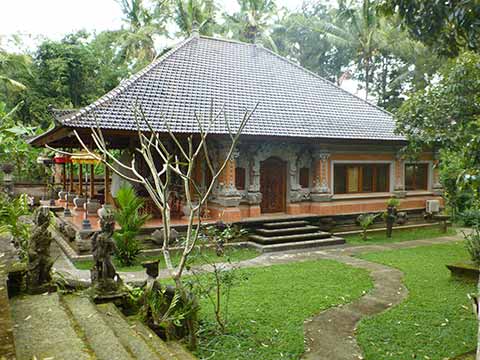More than just a style of building, it represents a philosophy of life that harmonizes humanity, nature, and divinity. Every structure, from grand temples to humble homes, reflects the deep-rooted values and traditions of the Balinese people, creating spaces that are as meaningful as they are beautiful.
In a world increasingly shaped by modern design trends, Balinese architecture remains a testament to the enduring principles of balance and connection. This article explores the core philosophies behind Balinese architecture, revealing how these principles not only define its aesthetic appeal but also preserve its cultural significance in the modern era.
Rooted in Hindu principles and local wisdom, Balinese architecture embodies harmony between humans, God, and nature.
Exploring the Philosophical Foundations of Balinese Architecture
Here are five core philosophies that underlie Balinese architecture.
1. Tri Hita Karana: Harmony Between God, Humans, and Nature
Tri Hita Karana is the main philosophy guiding Balinese architecture. This concept emphasizes harmony between humans and God (Parahyangan), humans and others (Pawongan), and humans and nature (Palemahan). Every structure in Bali is designed to reflect this balance, whether in the layout of temples, houses, or villages.
Tourists joining Bali Venture programs are often taken to traditional villages like Penglipuran, where the spatial layout and building design demonstrate the application of Tri Hita Karana.
2. Asta Kosala Kosali: Cosmology-Based Layout
Asta Kosala Kosali is a traditional guideline in Balinese architecture, similar to Feng Shui. This principle dictates the arrangement of buildings based on cardinal directions, sacred positioning, and energy balance. Temples are typically placed in areas considered sacred, such as mountains or beaches, while houses are organized with a spatial hierarchy based on their functions.
Visitors can observe the implementation of Asta Kosala Kosali when visiting iconic temples or art villages. Activities like Bali ATV ride in villages around Ubud allow travelers to see how these principles are applied in daily life.
3. Subak: Irrigation System and Communal Life
Subak is not just an irrigation system for rice fields but also a reflection of communal cooperation and spiritual balance. The architecture of terraced rice fields, such as those in Tegalalang, is designed to support the sustainability of ecosystems and communities. The system also includes small temples dedicated to Dewi Sri, the goddess of fertility.
Travelers participating in bali tour activities programs can explore Subak areas and learn about the close relationship between humans, water, and nature, which forms the foundation of sustainable architecture and agriculture in Bali.
4. Natural and Local Materials
Balinese architecture utilizes natural materials such as volcanic stone, wood, and thatch. These materials are chosen not only for their availability but also for their spiritual significance. Stones are often used for temples because they are considered durable and sacred, while wood is used for traditional houses.
Visitors engaging in activities like Bali driver for a day in rural areas can see firsthand how these natural materials are used, giving the impression that Balinese architecture truly integrates with its surroundings.
5. Spatial Hierarchy: Philosophy of Levels in Architecture
Balinese architecture incorporates a clear spatial hierarchy, from the most sacred areas to more common ones. Every traditional Balinese house consists of three main sections: nista (profane area), madya (transitional area), and utama (sacred area). This philosophy reflects the importance of spiritual balance in daily life.
Tourists on cultural tours with Bali Venture can gain deeper insights into how this spatial hierarchy is applied in the layout of villages and temples, as well as its significance in Balinese life.
These philosophies not only make Balinese architecture visually stunning but also spiritually rich, embodying harmony between humans, nature, and the Creator.








